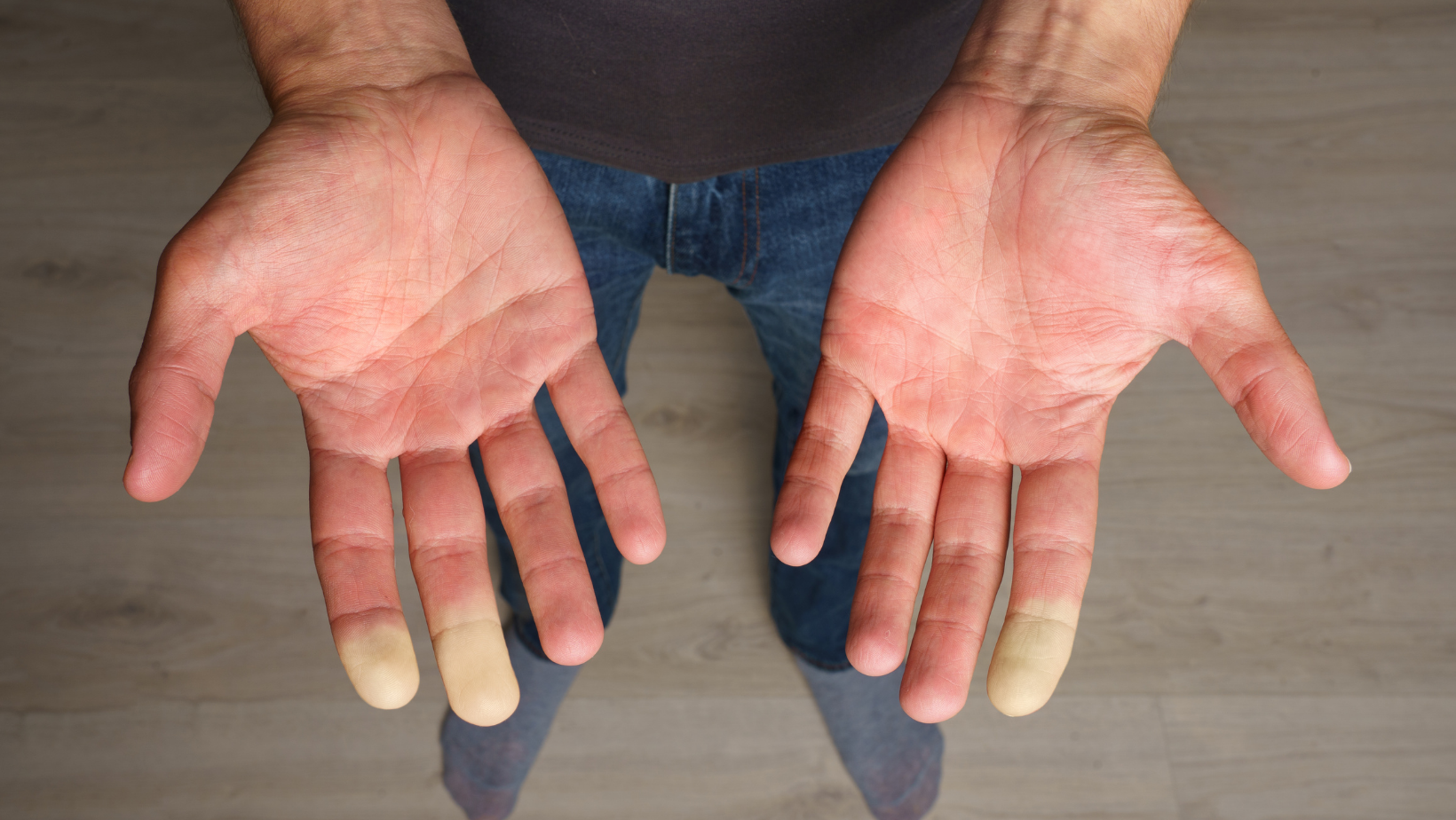Category
Raynaud's Syndrome, also known as Raynaud's phenomenon or Raynaud's disease, is a condition that affects blood flow to certain parts of the body, usually the fingers and toes, in response to cold or stress.

Have any questions?
If you have any questions, feel free to contact us at [email protected]. A member of our support team will help you shortly.
Share this blog
Fatigue
Energy
Stress
Sleep
Raynaud's Syndrome, also known as Raynaud's phenomenon or Raynaud's disease, is a condition that affects blood flow to certain parts of the body, usually the fingers and toes, in response to cold or stress. This disorder causes the small arteries that supply blood to narrow excessively, leading to colour changes in the affected areas and causing discomfort. Understanding the symptoms of Raynaud's Syndrome and adopting effective cold-weather management strategies are essential for individuals living with this condition.
The hallmark of Raynaud's Syndrome is a sequence of colour changes in the affected extremities in response to cold or stress. These changes occur in three phases:
During an episode, the affected areas, usually fingers or toes, turn white as blood flow is restricted, leading to oxygen deprivation. This phase is indicative of vasoconstriction in the small arteries.
Following pallor, the affected areas may turn blue or purple due to a lack of oxygen. This phase signals reduced blood oxygen levels and can be accompanied by pain or numbness.
As blood flow returns to the affected areas, they may turn red.
This phase, known as reactive hyperemia, is marked by increased
blood flow and can cause a tingling or throbbing sensation.
These episodes can vary in duration, ranging from minutes to
hours, and may be accompanied by discomfort, pain, or a burning
sensation.
Also known as Raynaud's disease, this form is less severe and not usually linked to other health conditions. It tends to be less problematic and can often be managed with lifestyle changes.
This form, also called Raynaud's phenomenon, is associated with other autoimmune or connective tissue disorders, such as scleroderma or lupus. It is generally more severe and may require more comprehensive medical management.
Managing Raynaud's Syndrome, especially during cold weather, is crucial for minimizing symptoms and improving quality of life. Here are effective strategies for coping with the challenges posed by freezing temperatures:
Layering clothing helps trap warmth close to the body. Wear thermal or insulated layers, and pay particular attention to keeping the extremities covered with gloves and warm socks.
Disposable hand and foot warmers can provide additional heat to warm extremities in colder temperatures. These portable heating solutions can be easily tucked into gloves or shoes.
Physical activity promotes blood circulation, so staying active is beneficial for individuals with Raynaud's. Engage in regular exercise to maintain overall cardiovascular health and improve blood flow to extremities.
Pre-warm your car before driving in cold weather, and ensure indoor spaces are adequately heated. Exposure to sudden temperature changes can trigger Raynaud's episodes, so creating a warm environment is crucial.
Caffeine and nicotine can constrict blood vessels, potentially worsening Raynaud's symptoms. Limiting or avoiding these substances can help maintain better blood flow to extremities.
Stress is a common trigger for Raynaud's episodes. Learning stress management techniques, such as biofeedback, relaxation exercises, or meditation, can help reduce the frequency and severity of symptoms.
In severe cases, medications may be prescribed to help dilate blood vessels and improve blood flow. Calcium channel blockers, vasodilators, and other medicines may be considered under the guidance of a healthcare professional.
Individuals with Raynaud's Syndrome should work closely with healthcare providers, especially rheumatologists or vascular specialists. Regular check-ups and discussions about symptom management strategies can help tailor an effective plan for each individual.
Raynaud's Syndrome can significantly impact the quality of life for those affected, especially during colder months. Understanding the symptoms and adopting appropriate cold-weather management strategies are crucial for minimizing discomfort and preventing complications. By staying proactive, maintaining warmth, and working with healthcare professionals to tailor a comprehensive management plan, individuals with Raynaud's can lead fulfilling lives despite the challenges posed by this vascular condition.